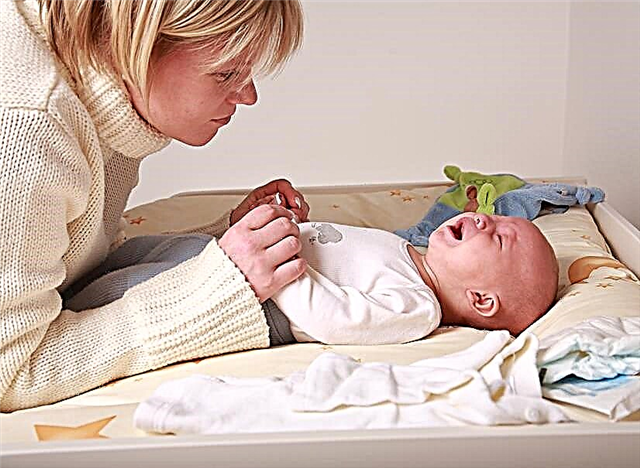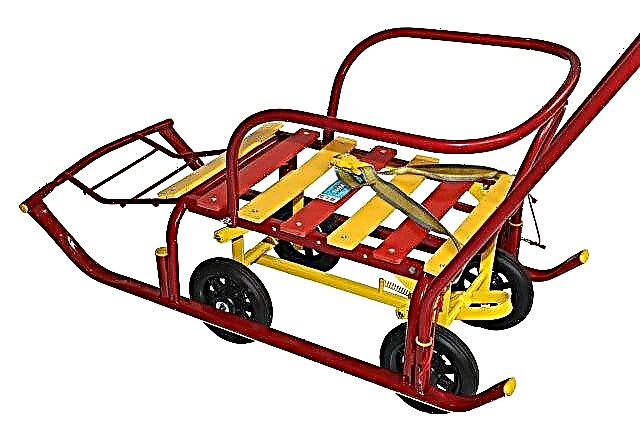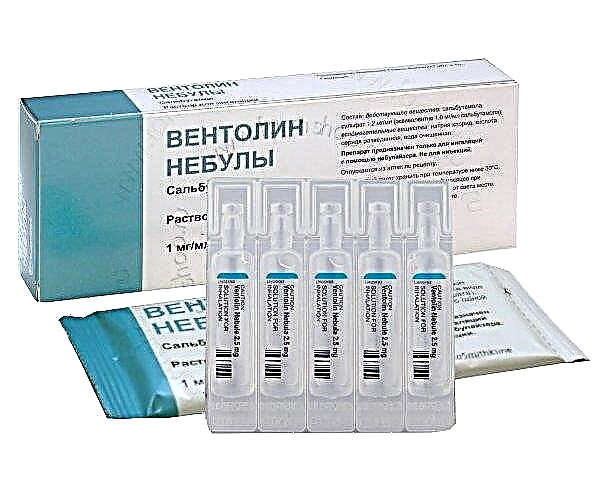Probably every mother at the mention of the word "dystrophy" seems to be a very thin child, hungry and emaciated. Dystrophy in most people will be associated with malnutrition. In fact, this is a broader concept than thinness and is caused not only by constant starvation.
The word distrophia is of Greek origin. The prefix dis means "violation" and trophia means "food."
What is dystrophy?
If you open the medical dictionary, you can read the following definition. Dystrophy is a constant disruption in the supply of nutrients to the cells of the body, as a result of which the development of the baby suffers, and the basis is an incorrect metabolism. In simple words, with dystrophy, nutrition is really disturbed at the cellular and tissue level, and not just digestion in the digestive tract. There are a lot of reasons for its violation, they will be discussed below. The result of such failures is a violation of the full development of the baby and a change in his body weight.
Dystrophy is not an independent disease. It is only a consequence of some serious pathology. The exception is prolonged fasting or excess nutrition.
In some diseases, degeneration of individual organs develops, for example: muscular dystrophy, myocardial dystrophy (dystrophy of the heart muscle), liver dystrophy.
Why does dystrophy develop?
In babies, dystrophy can develop even in the womb. The reason for this is pathological conditions during pregnancy, impaired blood circulation in the placenta, exposure to infections, lifestyle, bad habits and adverse factors that the expectant mother is exposed to at work, ecology, and some social conditions.
When a child is born, other reasons arise, which are divided into several groups. The first group includes insufficient, excessive or not quite balanced nutrition, inaccuracies in the feeding regime. These are the cases when the baby grows up in a vegetarian family and receives exclusively plant foods (buckwheat and other cereals). He will be deficient in protein. The diet is dominated by flour dishes, improper dilution of baby food.
The second group includes malnutrition due to difficulty in eating food and improper assimilation of its ingredients: any serious illness, impaired swallowing, cerebral palsy.
The third group - conditions in which the baby needs to provide a large amount of nutrients: prematurity, diseases of internal organs, recovery from severe infections.
The fourth group includes improper digestion and assimilation of food due to malabsorption syndrome, diseases of the gastrointestinal tract.

What happens in the child's body with dystrophy?
Despite the existence of many reasons that lead to the development of this condition, all babies with dystrophy have common changes in the gastrointestinal tract, metabolism, and the central nervous system.
If a child receives an insufficient amount of food ingredients for his life, his body will use up the fat and glycogen stored in the subcutaneous tissue, muscles and internal organs. When this is used up, the disintegration of themselves begins. Dystrophic changes will develop in all organs. The baby's blood composition changes, its volume decreases. The amount of fat in the body decreases, so children are prone to hypothermia, and heat production decreases. Due to the destruction of the cells of the nervous system, the child will not learn new skills, the development of speech is delayed. The kid becomes inactive and sedentary. Since the body does not receive nutrients, vitamins, trace elements, the child stops growing. Hypo- and avitaminosis, micronutrient deficiencies, such as iron deficiency anemia, develop.
If the baby receives an excess of nutrition, or food consisting mainly of carbohydrates, overweight and fatty degeneration of internal organs develops.

What forms of dystrophy are there?
In childhood, two groups of dystrophies can be distinguished. The first group develops due to insufficient intake, assimilation or increased consumption of nutrients. It includes hypotrophy, alimentary marasmus, kwashiorkor, hypo- and avitaminosis.
The states of the second group are due to the excess intake of nutrients or a decrease in their consumption. These include paratrophy and hypervitaminosis.
Hypotrophy is a condition that occurs in children of the first and second years of life, in which there is an exhaustion of the baby associated with a chronic nutritional disorder. As a result, a deficiency in body weight develops. This is one of the most serious problems, since it comes into contact with developmental delay, an increased incidence of infectious diseases, and as a result, it can lead to the death of the baby.
In foreign countries, there is no term "hypotrophy". The term "protein - energy deficiency" is used. It can be of varying severity.
Kwashiorkor is one of the options for malnutrition in babies. It is caused by insufficient intake of animal proteins into the body.
This condition is more common in children from tropical countries, or in diseases with protein deficiency.
In poor African countries, the reason for the development of kwashiorkor is feeding bananas from birth.
Nutritional marasmus is an extreme manifestation of hypotrophy, in which the lack of body weight is more than 60% of the age standard. The cause of insanity is caloric deficiency during fasting or illness with prolonged anorexia, vomiting.
Paratrophy is one of the forms of dystrophy caused by excessive, one-sided (mainly carbohydrate) diet with protein deficiency. As a result, the baby is gaining overweight.

What does a child with dystrophy look like?
Everyone knows what a healthy baby should look like. He is cheerful and active, has a good appetite and sound sleep. Such a child has velvety pink skin. The subcutaneous fatty tissue is well developed. Muscle tone is normal, the functions of internal organs are not impaired.
With different forms of dystrophy, there will be a peculiar appearance of the child. So, with hypotrophy of the first degree, the baby can look absolutely healthy. It can be suspected only when assessing body weight according to special tables that are available to every pediatrician. It can be noted that for some time the weight gain is slightly less than it should be. With careful questioning of parents and examination, you can find decreased appetite, excessive anxiety, sleep disturbance. Fat fold on the abdomen is less than normal. There may be a decrease in muscle tone.
The increase in body weight with second degree hypotrophy is small. At the same time, the growth rate of the child also lags behind the accepted age norms. The baby's appetite decreases, with force-feeding, regurgitation or vomiting occurs. The child's activity is reduced, he is low-emotional, lethargic, apathetic. Previously acquired skills may be lost, and the acquisition of new ones is delayed. The baby's sleep is restless. Changes also take place in appearance: the skin is dry, gathers in folds, diaper rash easily occurs on it. The child's face takes on a serious expression. Muscle tone is significantly reduced. Subcutaneous fat is very thin, or the abdomen and limbs are completely deprived of it, but it remains on the face. Moderately contoured ribs and joints. The baby has unstable stools. He often suffers from infectious diseases. Banal viral infections are complicated by purulent otitis media, pneumonia.
With hypotrophy of the third degree, weight gain may be completely absent. The child is sleepy, indifferent to the environment, irritable. When trying to inspect, he shows negativism, increased tearfulness. New skills do not appear, and those already acquired are completely lost. The baby has a complete lack of appetite. The appearance of the child resembles a skeleton covered with leather. It will be dry to the touch, but it will look pale gray in color. On the buttocks, hips, abdomen, the skin will hang down in folds. Subcutaneous adipose tissue is completely absent. The face takes on a "senile" expression. The eyes fall.
A kid suffering from alimentary marasmus looks the same as with third degree hypotrophy, but all signs will be even more pronounced. With kwashiorkor, against the background of extreme thinness, a huge belly will draw attention to itself. It appears as a result of the accumulation of fluid in the abdominal cavity - ascites. Edema is also possible on the face. They appear as a result of protein deficiency.

Babies with paratrophy, on the other hand, look plump. Their body weight is sometimes much more than expected, there may be a lead in growth. They have soft, rounded body shapes. The skin can be pale, pasty. The behavior is restless, unstable. Sleep may be disturbed. New skills are developing late.
Due to the peculiarities of the structure and metabolism, children with paratrophy are prone to allergic reactions and edema of the mucous membranes of the larynx, trachea, and bronchi. Therefore, with respiratory viral infections, they often develop laryngitis and bronchitis. Their frequency decreases with age.
How is dystrophy treated?
Dystrophy should be treated by a doctor. In mild cases, a pediatrician is sufficient. With third degree malnutrition, kwashiorkor, marasmus, severe forms of paratrophy, the help of a gastroenterologist, immunologist, nutritionist, endocrinologist, and geneticist is required. It is very important to identify the cause of dystrophy and eliminate it. Sometimes this requires many examinations: blood tests, urine, feces, hormone levels, ultrasound examination of the abdominal organs, etc.
It is very important to establish proper baby care. It should be in a comfortable environment: the room is cleaned daily and ventilated on time. It should be cozy, light, tidy. If you feel well, you need obligatory daily walks if the outside temperature is not lower than - 5 degrees. The baby is shown warm baths, massage and gymnastics. A child with dystrophy should often be picked up, played and talked to him, thereby creating a positive emotional background.
For any form of dystrophy, it is important to organize the correct balanced feeding. The amount of food is calculated individually for each baby. Defects in feeding are eliminated, it is possible that an adapted milk formula is replaced, for example, if a malabsorption in the intestine is detected, a special therapeutic mixture will be needed, where the protein is split into individual amino acids. For babies, the daily requirement for proteins, fats, carbohydrates, and water is calculated. The required amount of food is selected. In severe cases, intravenous infusion is necessary.
To correct the malfunction of the internal organs, enzyme, antiemetic drugs are prescribed, as well as drugs that improve metabolism. The vitamins and microelements necessary for the baby are introduced, for example, iron preparations.
Treatment of accompanying complications in the form of infectious diseases is mandatory. They almost always occur with third degree hypotrophy.
If the child's well-being improves, positive emotions and lost skills return, he starts eating well and willingly, while adding 25 - 30 grams daily, then the treatment of dystrophy can be considered successful.
Conclusion
Dystrophy is not just thinness, but a serious violation of the baby's health, which can lead to disastrous consequences. Leading a healthy lifestyle and giving up bad habits by parents, preparing for pregnancy can significantly reduce the likelihood of developing dystrophies. Breastfeeding from the first days of life, timely introduction of complementary foods, and good care of the baby are important in their prevention.



